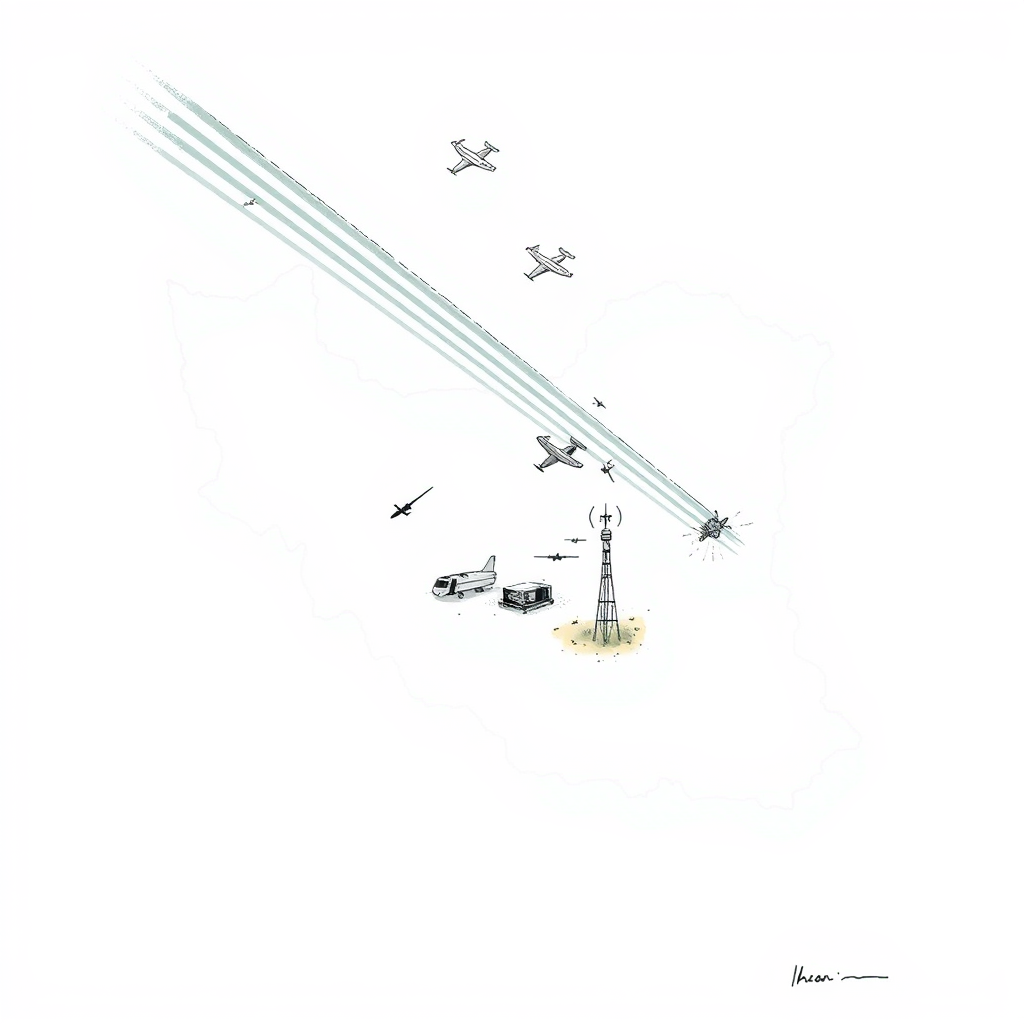Israel Gains Air Supremacy, Risks Escalation in Iran

Israel has established what appears to be decisive air supremacy over Iran just days into a fierce new offensive, a development that dramatically escalates the conflict and introduces a perilous new dynamic to regional security. Israeli military officials claim they can now operate freely within Iranian airspace, including over the capital Tehran, without facing significant resistance, following a campaign targeting and crippling Iran’s air defenses. This capability allows for a sustained and expanded bombing campaign, raising the specter of further escalation and potentially redrawing the lines of deterrence in a region already fraught with tension.
The offensive, dubbed Operation Rising Lion, was triggered by assessments that Iran was nearing nuclear weapons capability. Since Friday, Israel has targeted nuclear sites, missile launchers, airports, and key figures within the Revolutionary Guard Corps, with Prime Minister Benjamin Netanyahu vowing continued strikes until both nuclear facilities and missile stockpiles are neutralized. A particularly symbolic moment occurred when Israel struck the headquarters of Iran’s state television broadcaster during a live broadcast, a clear demonstration of reach and psychological dominance.
While Israel’s military success is undeniable, the situation is fraught with risk. Cornered, Iran may resort to increasingly desperate measures, leveraging its network of terrorist proxies and potentially accelerating its pursuit of a nuclear weapon. Despite recent setbacks, Iran retains the capacity to inflict damage and has already launched retaliatory missile and drone strikes, resulting in casualties on both sides.
The establishment of air supremacy has fundamentally altered the calculus of the conflict. Israel can now deploy a wider range of aircraft, including older, more cost-effective models, and strike targets with greater frequency and precision. Analysts suggest potential targets include the Iranian Navy, weapon storage facilities, and critical infrastructure. However, heavily fortified facilities like Fordow, a deeply buried nuclear site, remain largely impervious to conventional airstrikes.
The current situation presents a complex diplomatic challenge. Efforts to revive the Iran nuclear deal have been severely hampered, with the U.S. perceived as unable to restrain its ally Israel and having demonstrated a willingness to withdraw from international agreements. The window for a negotiated solution appears to be rapidly closing.
The long-term implications of Israel’s air supremacy are significant. While Israel’s military has demonstrated impressive capabilities, a prolonged conflict carries substantial risks. Iran’s depletion of missile and drone stockpiles, coupled with reported civilian casualties, underscores the human cost of the escalating violence. The conflict’s trajectory hinges on several factors, including the potential for U.S. intervention and the willingness of both sides to de-escalate.
It’s clear that this isn’t simply a military operation; it’s a high-stakes gamble with potentially catastrophic consequences. The current path risks further destabilizing the region and pushing Iran closer to the very outcome Israel seeks to prevent – a nuclear weapon. A return to diplomacy, however difficult, remains the most viable path to avert a wider conflict and secure a more stable future for the region. The speed with which Israel achieved air superiority is remarkable, but its ultimate success will be measured not by military gains, but by its ability to achieve a lasting and sustainable peace.